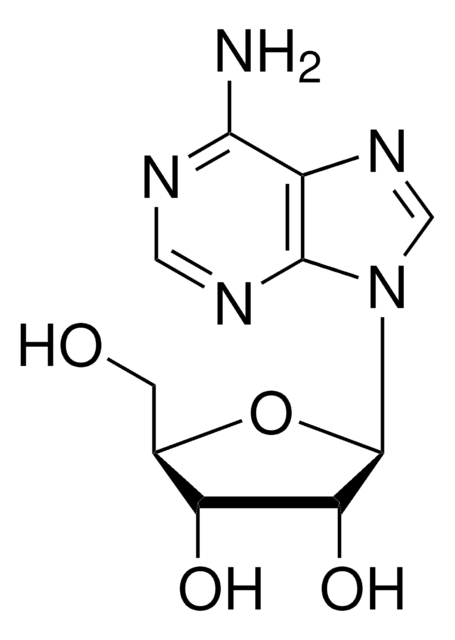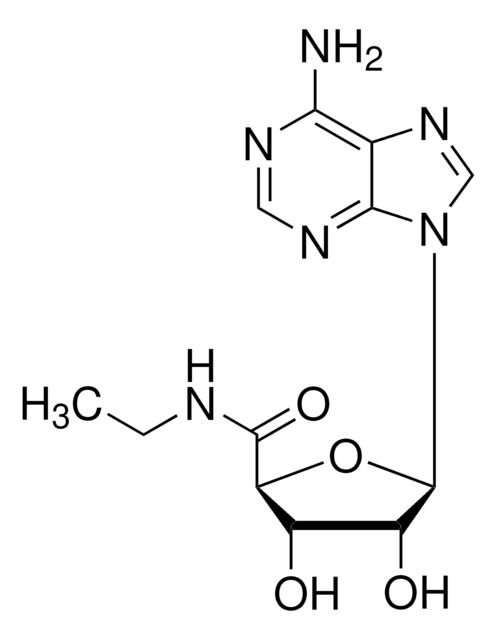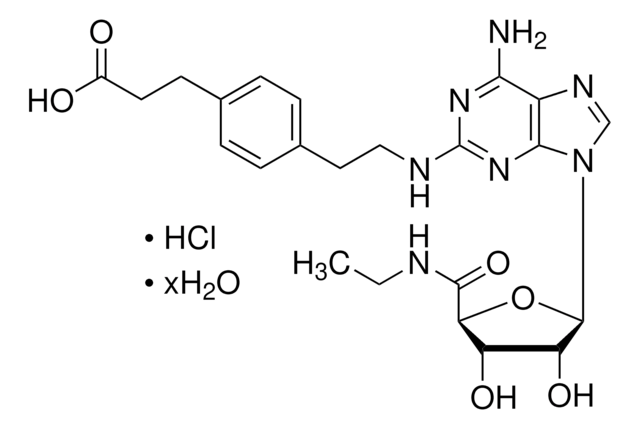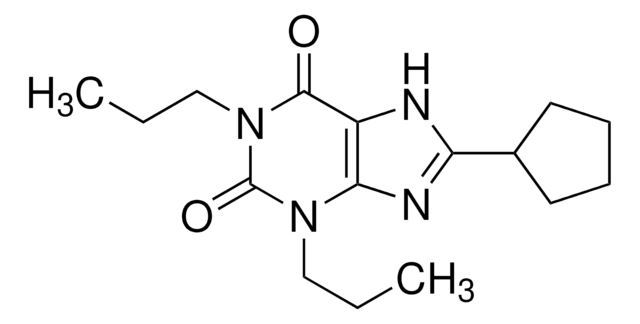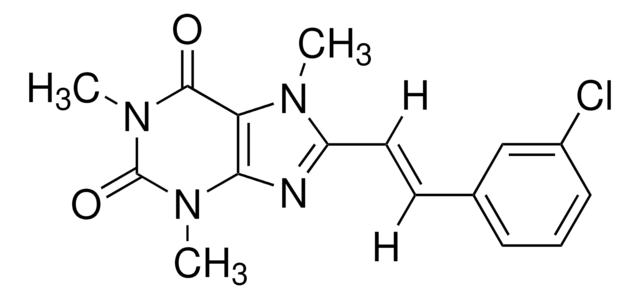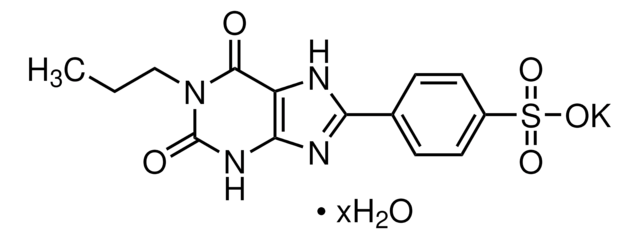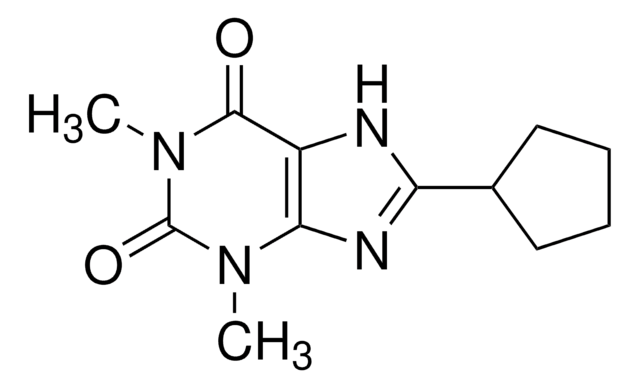M6316
MRS 1754 hydrate
≥98% (HPLC), solid
Sinónimos:
8-[4-[((4-Cyanophenyl)carbamoylmethyl)oxy]phenyl]-1,3-di(n-propyl)xanthine hydrate
About This Item
Productos recomendados
Nivel de calidad
Ensayo
≥98% (HPLC)
Formulario
solid
color
off-white
solubilidad
DMSO: soluble >10 mg/mL
temp. de almacenamiento
room temp
cadena SMILES
O.CCCN1C(=O)N(CCC)c2[nH]c(nc2C1=O)-c3ccc(OCC(=O)Nc4ccc(cc4)C#N)cc3
InChI
1S/C26H26N6O4.H2O/c1-3-13-31-24-22(25(34)32(14-4-2)26(31)35)29-23(30-24)18-7-11-20(12-8-18)36-16-21(33)28-19-9-5-17(15-27)6-10-19;/h5-12H,3-4,13-14,16H2,1-2H3,(H,28,33)(H,29,30);1H2
Clave InChI
ZACJDWOPQROWIK-UHFFFAOYSA-N
Información sobre el gen
human ... ADORA1(134) , ADORA2A(135) , ADORA2B(136) , ADORA3(140)
rat ... Adora1(29290) , Adora2a(25369) , Adora2b(29316)
Aplicación
- to study its effects on endothelial nitric oxide synthase (eNOS) phosphorylation induced by short-term acetate stimulation in human umbilical vein endothelial cells (HUVECs)
- blastema formation in zebrafish
- to serve as a positive control in the anti-sickling assay and to study the role of RA2B in the same
Acciones bioquímicas o fisiológicas
Características y beneficios
Información legal
Código de clase de almacenamiento
11 - Combustible Solids
Clase de riesgo para el agua (WGK)
WGK 3
Punto de inflamabilidad (°F)
Not applicable
Punto de inflamabilidad (°C)
Not applicable
Equipo de protección personal
Eyeshields, Gloves, type N95 (US)
Elija entre una de las versiones más recientes:
¿Ya tiene este producto?
Encuentre la documentación para los productos que ha comprado recientemente en la Biblioteca de documentos.
Los clientes también vieron
Nuestro equipo de científicos tiene experiencia en todas las áreas de investigación: Ciencias de la vida, Ciencia de los materiales, Síntesis química, Cromatografía, Analítica y muchas otras.
Póngase en contacto con el Servicio técnico
